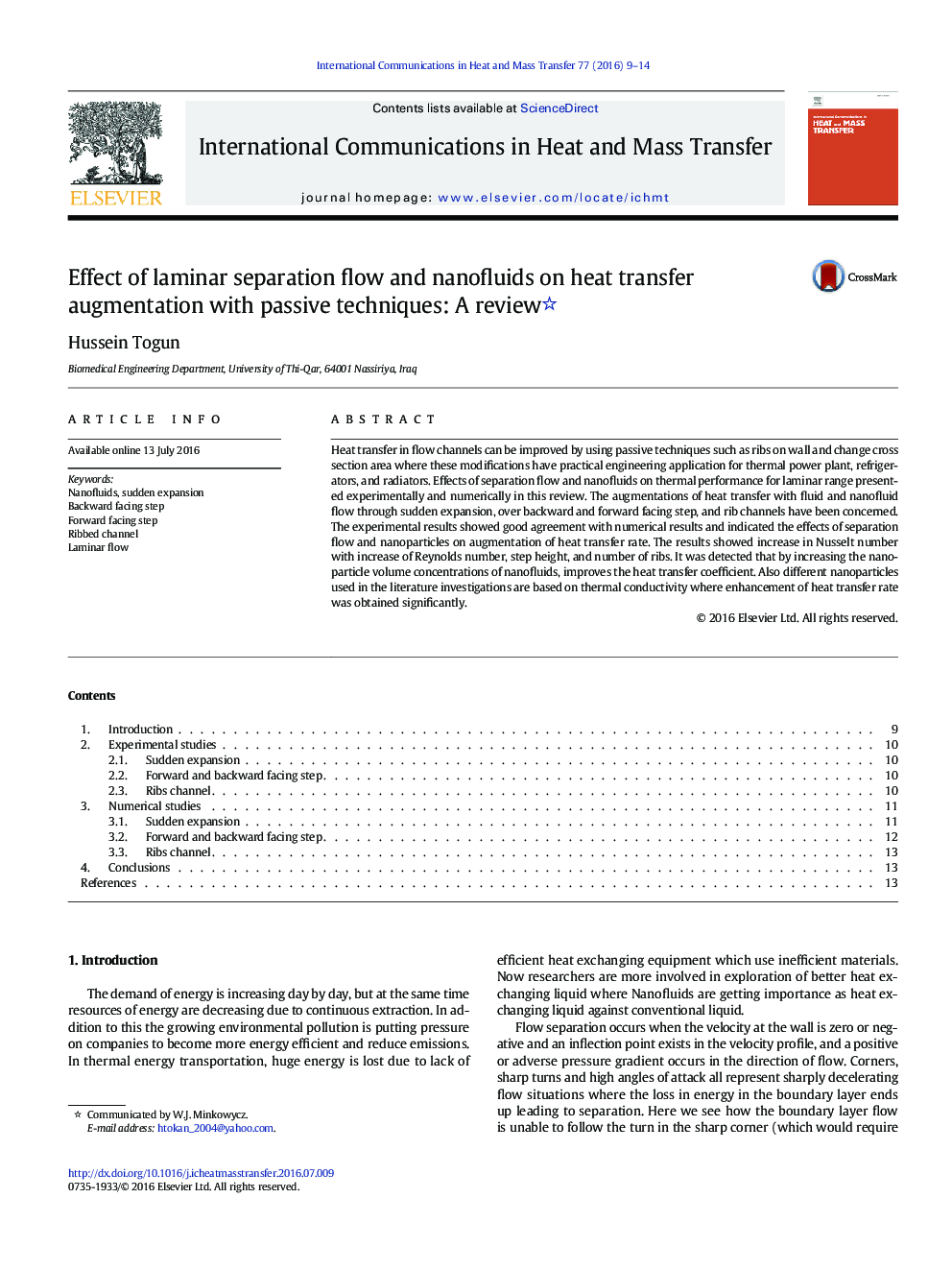| Article ID | Journal | Published Year | Pages | File Type |
|---|---|---|---|---|
| 652811 | International Communications in Heat and Mass Transfer | 2016 | 6 Pages |
Abstract
Heat transfer in flow channels can be improved by using passive techniques such as ribs on wall and change cross section area where these modifications have practical engineering application for thermal power plant, refrigerators, and radiators. Effects of separation flow and nanofluids on thermal performance for laminar range presented experimentally and numerically in this review. The augmentations of heat transfer with fluid and nanofluid flow through sudden expansion, over backward and forward facing step, and rib channels have been concerned. The experimental results showed good agreement with numerical results and indicated the effects of separation flow and nanoparticles on augmentation of heat transfer rate. The results showed increase in Nusselt number with increase of Reynolds number, step height, and number of ribs. It was detected that by increasing the nanoparticle volume concentrations of nanofluids, improves the heat transfer coefficient. Also different nanoparticles used in the literature investigations are based on thermal conductivity where enhancement of heat transfer rate was obtained significantly.
Related Topics
Physical Sciences and Engineering
Chemical Engineering
Fluid Flow and Transfer Processes
Authors
Hussein Togun,
